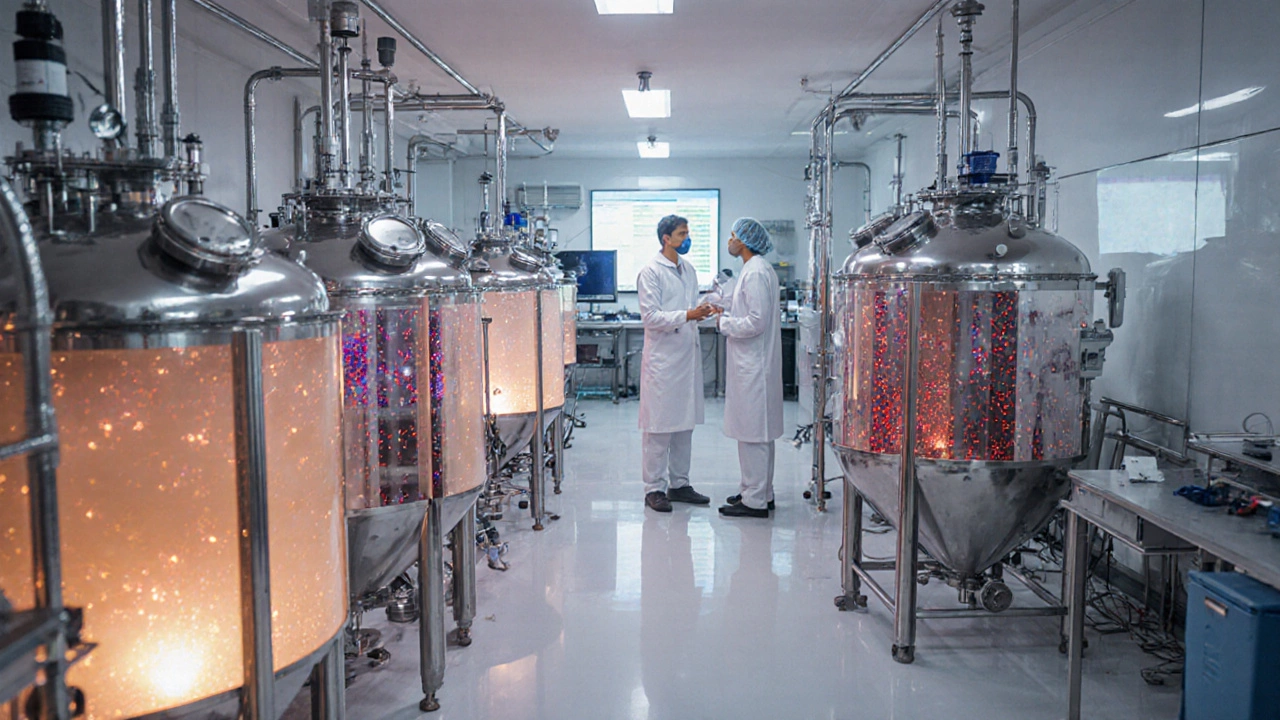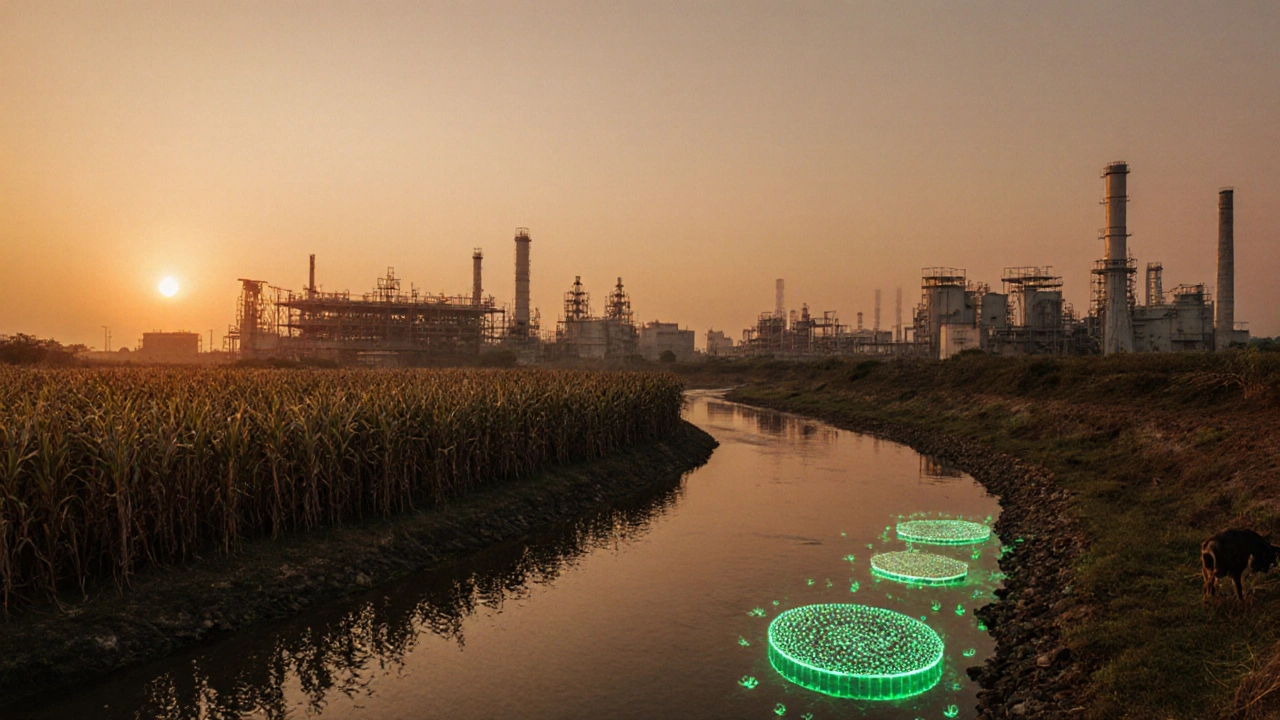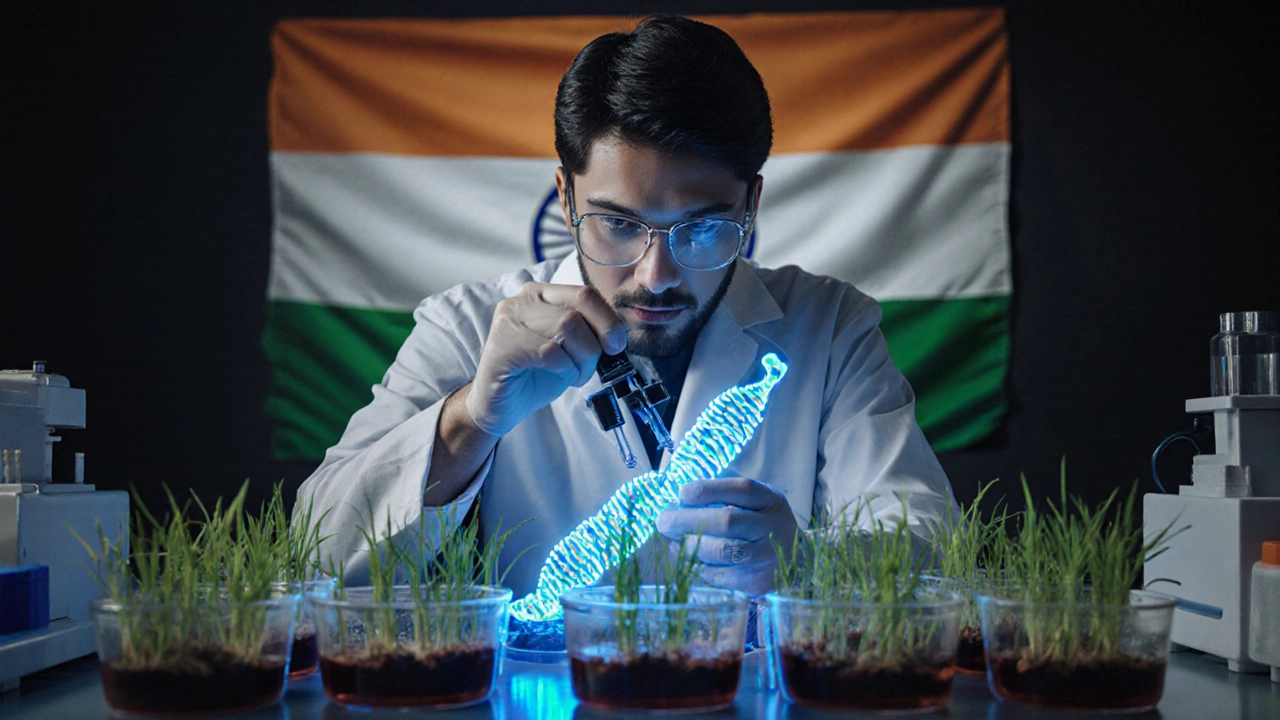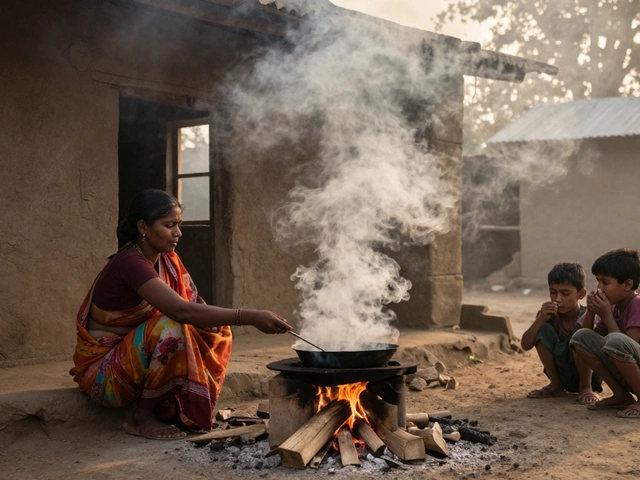Biotechnology Knowledge Check
Question 1 of 5
Which of these is NOT one of the three critical areas of biotechnology discussed in the article?
Biotechnology isn’t just lab coats and pipettes anymore. It’s changing how we grow food, treat diseases, and even clean up pollution. If you’ve heard the term but aren’t sure what it actually does, here’s the straight truth: biotechnology is built on three critical areas that drive nearly every breakthrough you hear about today. These aren’t just buzzwords-they’re the real engines behind vaccines, biofuels, and lab-grown meat.
Genetic Engineering and Gene Editing
This is the area most people think of when they hear "biotech." It’s about changing the DNA inside living things-plants, animals, even humans-to make them do something new. CRISPR-Cas9, developed in the early 2010s, made this faster, cheaper, and more precise than ever before. Before CRISPR, gene editing took years and cost millions. Now, a single lab in Bangalore can do it in weeks for under $5,000.
It’s not just science fiction anymore. In 2023, the first CRISPR-based therapy for sickle cell disease was approved in the U.S. and India. Patients who spent their lives in pain now have a one-time treatment that fixes the faulty gene. Farmers in Punjab are using gene-edited rice that resists drought and needs 30% less water. Even mosquitoes are being modified to stop spreading malaria-trials are already underway in Karnataka.
What makes this area critical? Because once you can edit genes, you can fix inherited diseases, make crops more resilient to climate change, and even bring back extinct species. But it’s not without risk. Off-target edits, ethical debates, and unequal access are real concerns. Still, the pace of progress here is unmatched.
Biopharmaceuticals and Medical Biotech
Think of biopharmaceuticals as medicines made from living cells-not chemicals. These include monoclonal antibodies, mRNA vaccines, and gene therapies. Unlike traditional pills, these are complex molecules that mimic or enhance your body’s own systems.
The pandemic showed how powerful this can be. mRNA vaccines for COVID-19 were developed in under a year because scientists had spent decades refining this tech. Companies like Biocon in Bangalore and Serum Institute in Pune now produce billions of doses of biologic drugs for diabetes, cancer, and autoimmune diseases. These aren’t just treatments-they’re precision tools. One drug, for example, can target only cancer cells and leave healthy tissue untouched.
What’s next? Personalized cancer vaccines made from a patient’s own tumor DNA. Cell therapies where your immune cells are pulled out, trained to hunt cancer, and put back in. By 2025, over 30 such therapies are in late-stage trials in India alone. The cost is still high-some treatments run over $1 million-but prices are dropping fast as manufacturing scales up.

Industrial and Environmental Biotech
This is the quiet giant of biotechnology. It’s not about curing diseases or editing genes-it’s about using microbes, enzymes, and algae to replace polluting industrial processes.
Imagine making plastic without oil. That’s already happening. Companies in Tamil Nadu and Gujarat are using genetically modified bacteria to turn sugarcane waste into biodegradable polymers. These plastics break down in soil within months, not centuries. In Maharashtra, factories are using fungi to clean toxic wastewater from textile mills-something chemical treatments couldn’t do.
Then there’s biofuel. India’s ethanol program, which blends fuel with alcohol made from sugarcane, now covers 12% of the country’s petrol demand. By 2030, that’s expected to hit 20%. The secret? Engineered yeast strains that ferment sugar faster and tolerate higher temperatures. Even cow dung is being turned into methane-rich biogas in rural biogas plants across Uttar Pradesh and Bihar.
This area matters because it tackles climate change at the source. Instead of burning fossil fuels, we’re letting biology do the work. It’s cheaper, cleaner, and uses waste as a resource. And unlike electric cars or solar panels, industrial biotech can retrofit existing factories without massive infrastructure changes.

Why These Three? The Bigger Picture
These areas don’t work in isolation. A gene-edited crop might be grown using biofertilizers made from engineered microbes. A cancer drug might be produced in bioreactors using cells modified with CRISPR. The lines are blurring-and that’s the point.
Biotechnology is no longer just a science field. It’s a platform. The same tools that cure disease can also feed people, power homes, and heal the planet. The real breakthrough isn’t one invention-it’s the convergence of these three areas.
India’s biotech sector grew by 18% in 2024, reaching $120 billion. It’s not just because of government funding. It’s because researchers here are solving local problems with global tools. A farmer in Odisha doesn’t care about CRISPR. He cares that his crop survived the drought. A mother in Delhi doesn’t care about mRNA. She cares that her child didn’t get dengue. Biotechnology’s power lies in how it meets real needs, not just scientific curiosity.
What’s Next?
Look ahead five years. Gene therapies will be routine for inherited blindness. Lab-grown meat will be on supermarket shelves in Bengaluru and Hyderabad. Sewage plants will use engineered algae to capture carbon and produce clean hydrogen. The tools are here. The questions are no longer "Can we?" but "Should we?" and "Who benefits?"
Biotechnology’s future isn’t about bigger labs or fancier machines. It’s about making sure these three areas work together to serve everyone-not just the wealthy. That’s the real challenge. And that’s where the next big breakthroughs will come from.
What are the three critical areas of biotechnology?
The three critical areas are genetic engineering and gene editing, biopharmaceuticals and medical biotech, and industrial and environmental biotech. Genetic engineering allows precise changes to DNA to treat diseases or improve crops. Biopharmaceuticals use living cells to create targeted medicines like mRNA vaccines and monoclonal antibodies. Industrial biotech uses microbes and enzymes to replace polluting industrial processes with sustainable alternatives, like biofuels and biodegradable plastics.
How is CRISPR changing biotechnology?
CRISPR-Cas9 made gene editing faster, cheaper, and more accurate. Before CRISPR, editing genes took years and cost millions. Now, labs can make precise changes in weeks for under $5,000. It’s being used to cure sickle cell disease, create drought-resistant crops, and even reduce malaria by modifying mosquitoes. This tool turned gene editing from a rare experiment into a scalable medical and agricultural solution.
Are biopharmaceuticals better than traditional drugs?
They’re not better in every way, but they’re more targeted. Traditional drugs are chemical compounds that affect the whole body, often causing side effects. Biopharmaceuticals, like monoclonal antibodies or mRNA vaccines, are designed to interact with specific molecules in the body. This means higher effectiveness and fewer side effects. For example, a biologic for rheumatoid arthritis blocks only the immune signal causing inflammation, not the entire immune system.
Can biotechnology help fight climate change?
Yes, and it already is. Industrial biotech uses microbes to turn agricultural waste into biofuels, bioplastics, and clean chemicals. In India, ethanol from sugarcane now replaces 12% of petrol. Fungi are cleaning toxic wastewater from textile factories. Algae in bioreactors are capturing CO2 and producing hydrogen. These solutions cut emissions at the source, without needing new power grids or massive infrastructure.
Is biotechnology only for rich countries?
No. India is a global leader in affordable biotech. Companies like Biocon and Serum Institute produce low-cost biologics used worldwide. CRISPR-based diagnostics for tuberculosis are now available for under $2 in rural clinics. Biofertilizers made from local microbes are helping small farmers increase yields without expensive imports. Biotechnology is becoming more accessible-not because it’s cheap, but because innovation is happening where it’s needed most.



